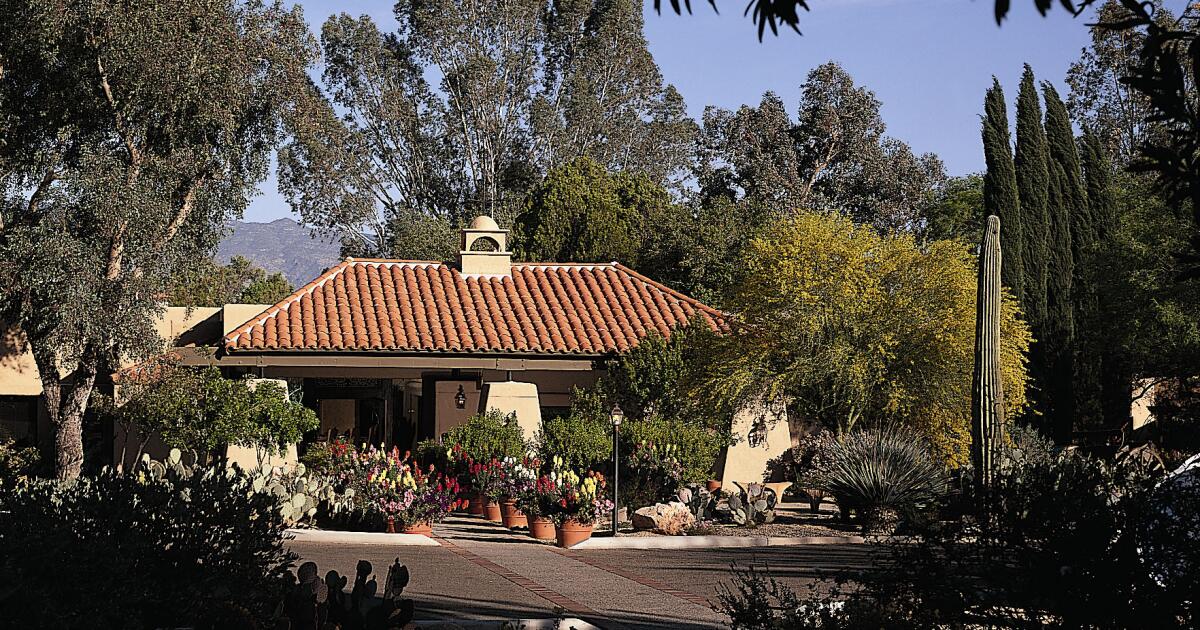Copyright Los Angeles Times

In the $6.3-trillion world of wellness, catering to women is the lowest-hanging fruit on the tree. Yet women’s wellness is an area that’s historically been underfunded and underserved. In the U.S., women were rarely included in clinical trials before 1993, and in 2020, only 5% of global research and development funding was allocated to women’s health research. Even spokespeople for the Global Wellness Institute, the largest research organization dedicated to tracking the industry, recognize their failure to collect data on what women need or want from the wellness space; they say they’ve found it more logical to focus on fitness and longevity in the past. Enter Canyon Ranch, the OG of American wellness retreats, founded in 1979. In September 2026, it plans to unveil its third location on the outskirts of Austin, Texas, an ambitious 600-acre ranch whose primary focus will be women’s wellness. Two-thirds of the brand’s guests are women, says Chief Executive Officer Mark Rivers, referring to his existing resorts in Lenox, Mass., and Tucson. Yet that same demographic, he says, “is misunderstood and swallowed in general healthcare.” By focusing almost entirely on relaxation and beauty, yoga retreats and boot camps, the spa industrial complex is missing a massive part of what women care about: the physiological changes women face in different stages of their life. It’s a gap that companies such as Canyon Ranch have been racing to address in recent years as people’s interest in wellness — and willingness to invest in it — has skyrocketed. To date, their efforts have typically manifested as the occasional treatment or themed retreat; there still isn’t a single wellness resort making women’s health their calling card. The very symptoms that women’s wellness retreats address — hot flashes, vaginal dryness, hair loss — have long felt too taboo to name out loud, much less put on a marquee. But lately the symptoms of perimenopause and menopause have become buzzy talk show fodder and the subjects of bestselling books. Women such as Oprah, Drew Barrymore, Michelle Obama and Naomi Watts, who has her own menopause health product line, are now openly talking about the stage in a woman’s life that for decades was vaguely referred to as “the change.” By 2030 the world population of menopausal and postmenopausal women is projected to increase 9%, to 1.2 billion, with a forecast market size of $24.4 billion. Spas will have to cater to this powerful market or risk getting left behind. It’s no wonder that wellness industry pioneers including SHA Wellness in Mexico and Spain, Ananda in the Himalayas, and Kamalaya resort in Koh Samui, Thailand, now offer programs to address fertility, pelvic floor dysfunction and more. And the growing discourse around these issues for women has made it easier for men to bring up similar concerns too. “The rise in awareness around the gender health gap — particularly the lack of persistent data on female hormones and health — has helped normalize conversations that were long overdue,” says Anna Bjurstam, head of wellness at Six Senses Hotels Resorts Spas, which this year introduced a female wellness pilot program in partnership with women’s health expert Dr. Mindy Pelz. “Let’s face it, the wellness industry has historically centered on weight loss and aesthetics. But women want to feel good, not just look good. What we’re seeing now is a shift toward empowerment, education and energy.” Rivers, of Canyon Ranch, claims that his resort, however, will be the industry’s first dedicated women’s wellness practice. “There’s a lot of noise in the space, but we’re actually making an investment in it,” he tells Bloomberg News. To wit, Canyon Ranch Austin is a sizable investment. It had been reported to cost about $122 million. Now Rivers confirms the price tag is actually reaching $500 million, of which $50 million will be devoted to the largest spa in Texas, clocking in at 40,000 square feet with 37 treatment rooms. When Canyon Ranch opened in Tucson in the ’70s, it was a departure from the era’s trendy “fat farms” focused on weight loss. From the start, the brand worked with nutritionist and fitness experts to offer a lifestyle-driven approach to well-being. “We are not a hospital or medical clinic,” Rivers says. “We are a resort focused on health as a lifestyle choice.” It’s also a global leader for all things longevity. Since its inception, the brand says it’s welcomed 1 million guests and curated a team of board-certified medical doctors including Jennifer Wagner, a medical advisor to the U.S. Olympic Committee, and Richard Carmona, a former U.S. surgeon general. “If women have been short-sold by the medical world, I also feel like they have been getting short-sold by the wellness space,” says Beth McGroarty, director of research for the Global Wellness Institute, who has no affiliation with Canyon Ranch’s forthcoming resort but considers it to be groundbreaking in its ambitions. “We suddenly saw all of these menopause programs, but many are rooted in pampering, community and celebrity-driven supplements. Canyon Ranch is adding the medical piece.” Although Austin will focus on women’s health, Tucson will be considered Canyon Ranch’s hub for all things longevity and the Lenox location, in Massachusetts’ Berkshire Mountains, will tackle burnout. Stays at the Austin outpost will be priced from $1,400 per person, per night — including pickleball clinics, infrared sauna sessions and wine-paired tasting menus. (That price is about $200 more per night than its siblings charge, and higher yet than its global competitors, though Canyon Ranch rates cover lots of classes and programs that other wellness resorts charge à la carte.) Canyon Ranch Austin is the first resort the company is building from scratch; the others fill historic, retrofitted buildings. Located a little less than an hour from downtown in rural-feeling Spicewood, the project is being designed by award-winning architecture firm Lake Flato. It will have 141 hotel rooms, 134 residences, six racquet sports courts, two pools and an outdoor cooking studio centered on grilling. The on-site female health facility, called the Women’s Wellness Collective at Canyon Ranch Austin, will address the evolving needs of women from their 30s onward; it will cover a wide range of health concerns, including sleep, nutrition, postpartum depression and midlife beauty. Men will be welcome too. Blood work, bone density scans, sleep screenings and other medical tests will all be recommended or prescribed according to gender, age and individualized health concerns; the same will apply to the fitness offerings. In a state that so heavily polices fertility medicine, Canyon Ranch has decide to not include reproductive health in its offerings and will not be staffed with OB-GYNs. But the brand’s other properties have a high-volume of babymooners, and Rivers says the Austin location will offer prenatal massages and pre- and postbirth body work. Prescription-based hormone replacement therapy will also be available. That’s not to say that beauty will be an afterthought. Hair thinning and skin elasticity are examples that beauty and women’s wellness go hand in hand, Rivers argues, and says that the spa will be prepared to deal with these topics holistically. The intention is also to give guests tools and techniques that they can carry home, but Canyon Ranch also says it hopes that some people will want to live the Canyon Ranch life for good. Like many of its peers, it’s currently offering two- and three-bedroom homes for sale, from $3.4 million, alongside the new Austin resort. Each residence is kitted out with wellness features such as saunas, cold plunges, recovery lockers stocked with massage guns and foam rollers, and stargazing perches with NASA-grade telescopes — plus complimentary access to the spa and the resort’s 35-plus daily activities. That, in some ways, paints another version of the future of wellness resorts, in which people no longer vacation to establish healthy habits but relocate for them. At the very least, it’s a secondary strategy that plays to either gender.



